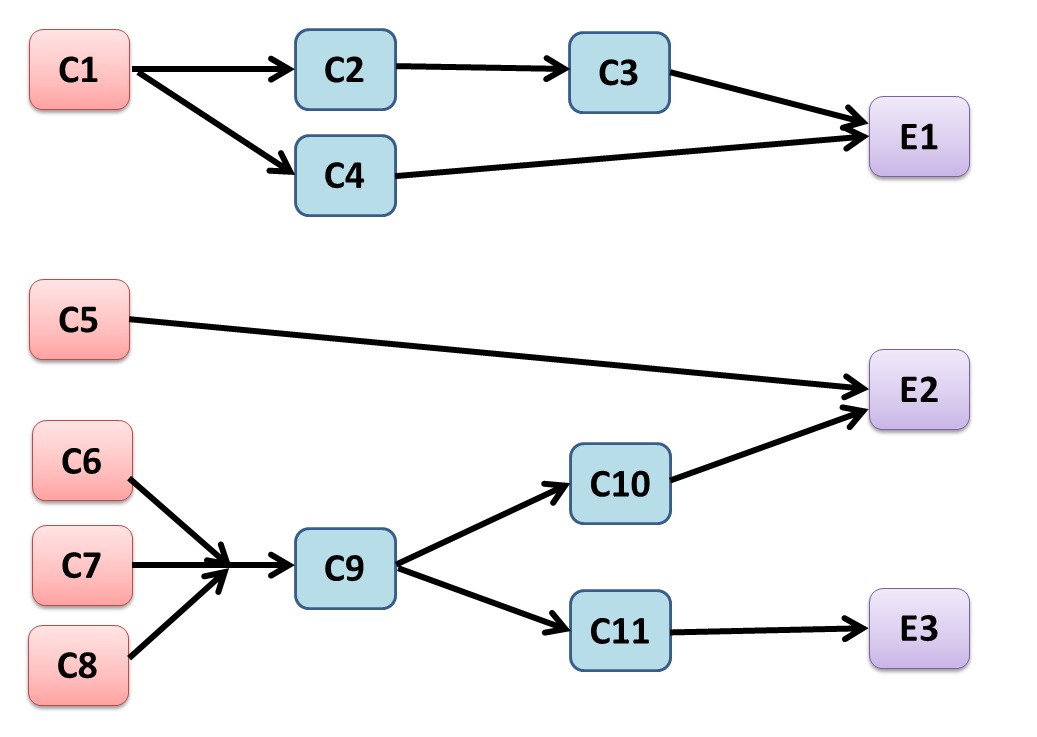

In various traditions, this is closely associated with the doctrine of emptiness ( śūnyatā). Consequently, all phenomena lack essence. Because everything is dependently originated, nothing is permanent (hence the Buddhist concept of impermanence, anicca) and nothing has any self-nature or essence ( anatta). space ( vacuum), cessations (including nirvana), and suchness (the absence of self, namely, anatta).

As such, everything in the world has been produced by causes. As an ontological principle (i.e., as a metaphysical concept about the nature of existence), it holds that all phenomena arise from other, pre-existing phenomena, and in turn current phenomena condition future phenomena.The principle of dependent origination has a variety of philosophical implications. Dependent origination instead views the change as being caused by many factors, not just one or even a few. As the interpretations often involve specific aspects of dependent origination, they are not necessarily mutually exclusive to each other.ĭependent origination can be contrasted with the classic Western concept of causation in which an action by one thing is said to cause a change in another thing. 7.4.4 The 12 nidanas in Mahāyāna sutras and tantrasĭependent origination is a philosophically complex concept, subject to a large variety of explanations and interpretations.7.2.2.1 Analysis of rebirth without a self.7.2.1 Relations of being, becoming, existence and ultimate reality.7.1.2 Abhidharma views of conditionality.7.1.1 Necessary and sufficient conditions.6 Transcendental/reverse dependent origination.

4.4 Correlation with the five aggregates.3.4.1 Conditionality as the middle way - not-self and emptiness.3.3.1 The Buddha's discovery of conditionality.3.2.2 Variable phenomena - dependently arisen processes.3.2 Variable phenomena, invariant principle.3 Dependent origination in early Buddhism.A parallel collection of discourses also exists in the Chinese Saṁyuktāgama (henceforth SA). It is the main topic of the Nidana Samyutta of the Theravada school's Saṃyuttanikāya (henceforth SN). The doctrine of dependent origination appears throughout the early Buddhist texts. Several modern western scholars argue that there are inconsistencies in the list of twelve links, and regard it to be a later synthesis of several older lists and elements, some of which can be traced to the Vedas. Īnother interpretation regards the lists as describing the arising of mental processes and the resultant notion of "I" and "mine" that leads to grasping and suffering. The reversal of the causal chain is explained as leading to the cessation of rebirth (and thus, the cessation of suffering). The traditional interpretation of these lists is that they describe the process of a sentient being's rebirth in saṃsāra, and the resultant duḥkha (suffering, pain, unsatisfactoriness), and they provide an analysis of rebirth and suffering that avoids positing an atman (unchanging self or eternal soul). These processes are expressed in various lists of dependently originated phenomena, the most well-known of which is the twelve links or nidānas (Pāli: dvādasanidānāni, Sanskrit: dvādaśanidānāni). The doctrine includes depictions of the arising of suffering ( anuloma-paṭiccasamuppāda, "with the grain", forward conditionality) and depictions of how the chain can be reversed ( paṭiloma-paṭiccasamuppāda, "against the grain", reverse conditionality). The basic principle is that all things (dharmas, phenomena, principles) arise in dependence upon other things. It states that all dharmas (phenomena) arise in dependence upon other dharmas: "if this exists, that exists if this ceases to exist, that also ceases to exist". Pratītyasamutpāda ( Sanskrit: प्रतीत्यसमुत्पाद, Pāli: paṭiccasamuppāda), commonly translated as dependent origination, or dependent arising, is a key doctrine in Buddhism shared by all schools of Buddhism.


 0 kommentar(er)
0 kommentar(er)
